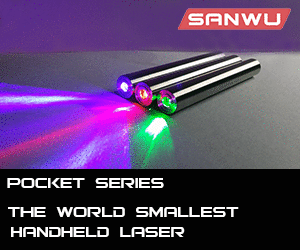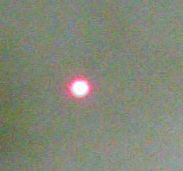If a diode is killed by catastrophic optical damage (COD) it cannot be repaired in this way.
Only a diode that is an open circuit has a chance of being revived. So, if your diode becomes an "LED" (which is likely COD) you're out of luck. If the diode produces no light at all and draws no current at all, that means that it is possible that the diode failure could be from the tiny wires melting, in which case it may be repaired.
Just in case that wasn't clear.
Good luck on this and I'll look forward to seeing the results.
Um, no. I just revived two totally dead (20 ohms in both directions) 405 burner diodes using a technique based on reverse pulsed bias.
Used 9V lithium (maybe important, there seems to be a current limit on these) applied in reverse with very short pulse cycle.
Seems that it "blows out" the short if the pulse is large and narrow enough, leading to a working laser at reduced power as long as the bond wires also don't blow during this treatment.
Unfortunately one diode failed shortly after when trying to increase power from LED-like levels by more zapping.
I would recommend the use of a relatively low voltage say 1.5V at several hundred mA for about 0.5us as this would reduce the chances of a blown bond wire.
The way to tell if it is working is to measure the reverse current. If the short is gone then the current will drop sharply down to 10mA or so with 100 ohm series resistor in the reverse direction from >100mA.
Just to prove that this isn't a joke, I include beam shots and power data from the diode which survived.
Used a PS3 diode as the beam power sensor, and got the following.
14.31 mA on diode at 40mA power in
>20mA on diode at 60mA power in
Used an attenuator consisting of polarising sheet in beam path.
0.59mA at 40mA in
0.88mA at 59mA in
0.98mA at 67mA in
Offset 0.12mA (quiescent)
Additional observations during this process.
The diode will get HOT! I think this is probably normal, as all the energy is being dissipated within the shorted area.
I also noticed that signs of a potentially recoverable diode are that it will read slightly different currents in forward and reverse bias, a permanently fried diode will not do this and read more like 3 ohms or less.
It appears that this effect is unique to GaN devices, I have never noticed anything like this with any other laser.
I also had a PS3 diode once with a big hole in the beam profile which recovered some power when I zapped it with 60mA short pulses.
Update:- Grr, shorted again. I think it is probably toast this time.
I did however manage to solder on new bond wires to the 63133, not much output though.
Comparing with a known good open can burner diode from a Sony laptop DVD writer it is obviously LED'd.
In retrospect I really should have posted a beam profile etc.
I am in the process of hacking a cheap Logitech webcam for this purpose, seems that putting sanded plexi on top of the chip works well.
So does that "broken" B/W CMOS camera as it clearly has sensitivity to laser light but not room light.
EDIT: Modified technique works with a 1mW diode from a broken red laser pointer.
This one was working then it went 59 ohms so I tried the same trick.
Works fine now, so far no sign of damage.
EDIT 2:- I need fried diodeage peoples.
send 'em to Mandoline Cottage, Port Soif Lane, GY6 8AH labelled "Toasted diodes"..
I will be sure to post results and if the diodes are reliable they will be sent back.
-A








